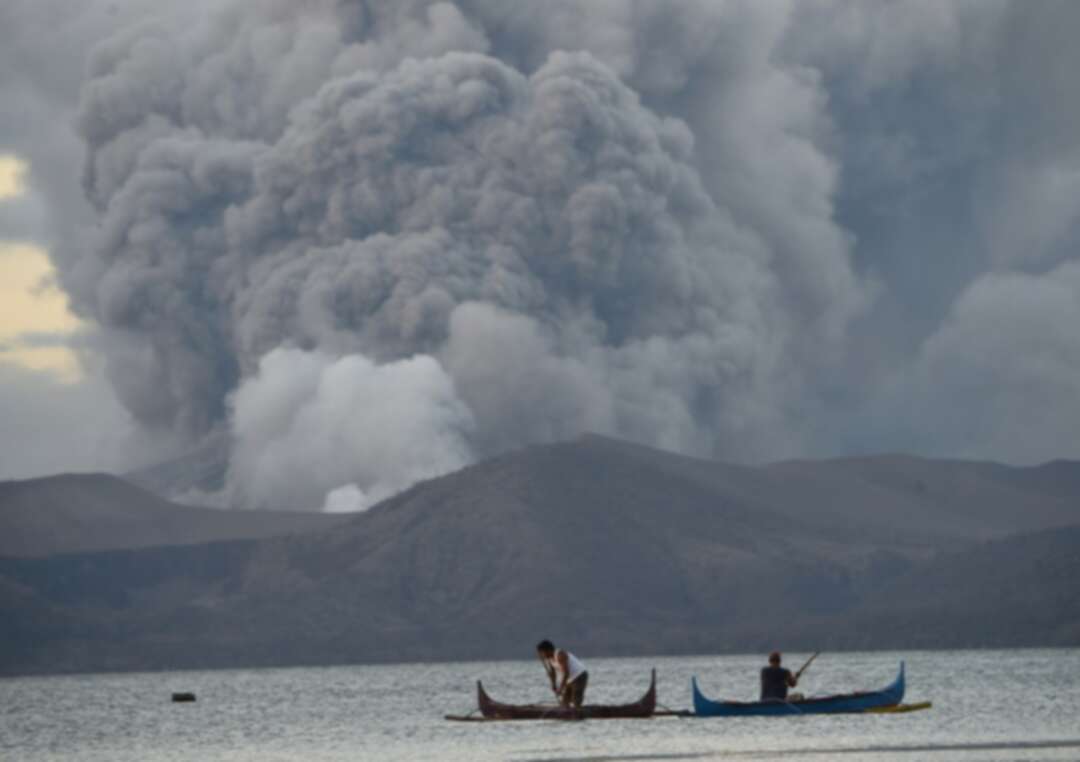-
Tens of thousands face uncertainty as Philippine volcano spews lava

Taal volcano in the Philippines could spew lava and ash for weeks, authorities warned Tuesday, leaving tens of thousands in limbo after they fled their homes fearing a massive eruption.
The crater of the volcano exploded to life with towering clouds of ash and jets of red-hot lava on Sunday, forcing those living around the mountain south of Manila to rush to safety.
Many people abandoned livestock and pets as well as homes full of belongings after authorities sounded an alert warning that an "explosive eruption" could come imminently.
"We left everything apart from what we're wearing," said Robert Cadiz, a 47-year-old fisherman among some 30,000 who took refuge in shelters. "We were terrified."
Gerald Aseoche, 30, who left with his four young children and a few possessions, has missed work to stay with them as the volcano belches out lava and earthquakes tied to the eruption rattle the region.
"I am hoping this won't go on too long because I will lose my job if I can't report to work immediately," Aseoche, a house painter, told AFP at an evacuation centre.
Taal is one of the most active volcanoes in a nation hit periodically by eruptions and earthquakes due to its location on the Pacific "Ring of Fire" -- a zone of intense seismic activity.
Philippine Red Cross Chairman Richard Gordon warned that the group was "preparing for the worst" and urged people to away from the volcano.
"Bring your animals and livestock to evacuation centres if you must," he added.
The Taal eruption has been putting on a stunning and terrifying display, including an ash cloud illuminated with lightning bolts and shot dark-grey columns 800 metres (half a mile) in the sky.
Renato Solidum, head of the Philippines' seismological agency, said Taal's previous eruptions have lasted as long as months so it was impossible to predict an end to the current activity.
However, he said the alert warning of a potentially catastrophic "explosive eruption" may remain in place for weeks, depending on developments.
"We have a protocol of waiting for several days, sometimes two weeks, to make sure that indeed... volcano activity has essentially stopped," he told AFP.
The volcano dramatically burst with activity on Sunday, shooting massive plumes of ash 15 kilometres (nine miles) into the sky that then rained down on the region.
Falling ash pushed aviation officials to temporarily shut down Manila's main international airport, forcing the cancellation of hundreds of flights and stranding tens of thousands of travellers.
Ninoy Aquino International Airport resumed reduced operations on Monday and was gradually recovering on Tuesday, but a backlog of cancelled flights resulted in ongoing pain for travellers.
Taal's last eruption was in 1977, but it has a long history of activity. In 1965 the volcano, which is a popular tourist attraction set in a picturesque lake, killed some 200 people.
The country's most powerful explosion in recent years was the 1991 eruption of Mount Pinatubo, about 100 kilometres northwest of Manila, which killed more than 800 people.
source: AFP
Tags
You May Also Like
Popular Posts
Caricature
BENEFIT Sponsors BuildHer...
- April 23, 2025
BENEFIT, the Kingdom’s innovator and leading company in Fintech and electronic financial transactions service, has sponsored the BuildHer CityHack 2025 Hackathon, a two-day event spearheaded by the College of Engineering and Technology at the Royal University for Women (RUW).
Aimed at secondary school students, the event brought together a distinguished group of academic professionals and technology experts to mentor and inspire young participants.
More than 100 high school students from across the Kingdom of Bahrain took part in the hackathon, which featured an intensive programme of training workshops and hands-on sessions. These activities were tailored to enhance participants’ critical thinking, collaborative problem-solving, and team-building capabilities, while also encouraging the development of practical and sustainable solutions to contemporary challenges using modern technological tools.
BENEFIT’s Chief Executive Mr. Abdulwahed AlJanahi, commented: “Our support for this educational hackathon reflects our long-term strategic vision to nurture the talents of emerging national youth and empower the next generation of accomplished female leaders in technology. By fostering creativity and innovation, we aim to contribute meaningfully to Bahrain’s comprehensive development goals and align with the aspirations outlined in the Kingdom’s Vision 2030—an ambition in which BENEFIT plays a central role.”
Professor Riyadh Yousif Hamzah, President of the Royal University for Women, commented: “This initiative reflects our commitment to advancing women in STEM fields. We're cultivating a generation of creative, solution-driven female leaders who will drive national development. Our partnership with BENEFIT exemplifies the powerful synergy between academia and private sector in supporting educational innovation.”
Hanan Abdulla Hasan, Senior Manager, PR & Communication at BENEFIT, said: “We are honoured to collaborate with RUW in supporting this remarkable technology-focused event. It highlights our commitment to social responsibility, and our ongoing efforts to enhance the digital and innovation capabilities of young Bahraini women and foster their ability to harness technological tools in the service of a smarter, more sustainable future.”
For his part, Dr. Humam ElAgha, Acting Dean of the College of Engineering and Technology at the University, said: “BuildHer CityHack 2025 embodies our hands-on approach to education. By tackling real-world problems through creative thinking and sustainable solutions, we're preparing women to thrive in the knowledge economy – a cornerstone of the University's vision.”
opinion
Report
ads
Newsletter
Subscribe to our mailing list to get the new updates!






















